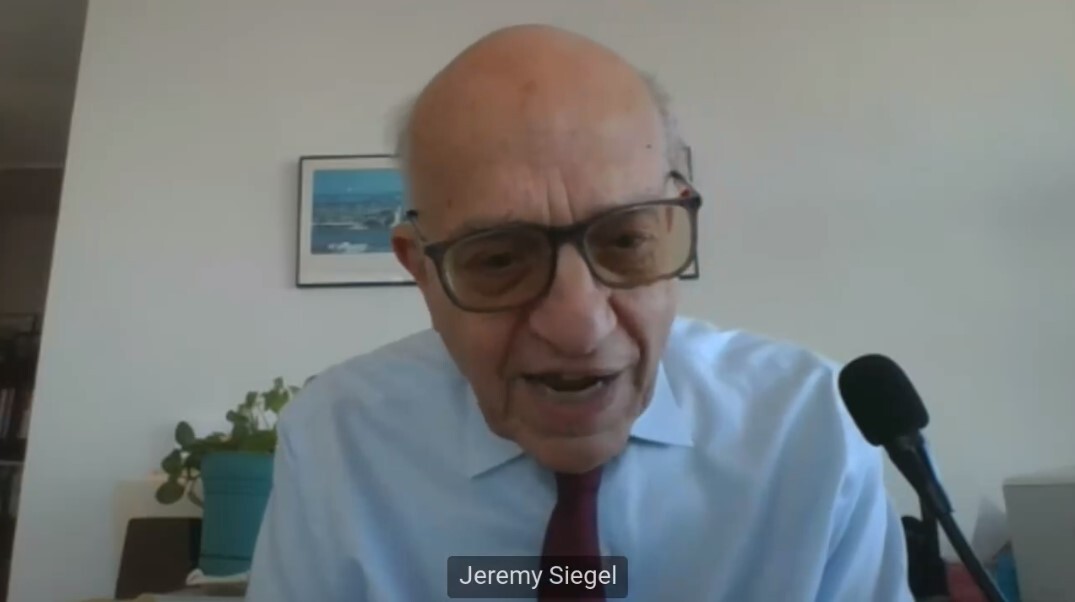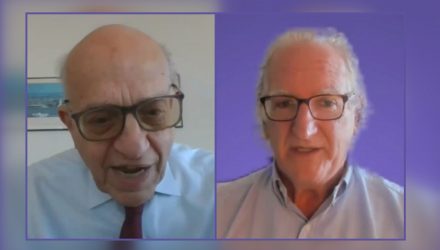With 2023 drawing to a close, the time has come once again to take a longer look at what next year might bring. As part of VettaFi’s 2024 Market Outlook Symposium, Vettafi Vice Chairman Robert Huebscher sat down with Professor Jeremy Siegel to discuss. Siegel, Russell E. Palmer Professor Emeritus of Finance at the Wharton School, who also serves as WisdomTree’s senior economist, took the time to share his thoughts on the 2024 market outlook.


The pair’s conversation followed recent dovish signaling from the Fed. For Siegel, 2023 saw a “tale of two markets” take place, with the so-called Magnificent Seven on one side and styles like value on the other. In 2024, he believes, markets will see a reversal, with value and small stocks shedding their lethargy as part of his market outlook.
“I’m not saying these large stocks won’t do well, they’ve got incredible franchises and growth prospects, but I’m bullish and I’m going to say they’re 10% to 15% from today’s level toward the end of 2024,” Siegel said.
Inflation, the Fed, and the Market Outlook
The pair turned to Siegel’s ongoing coverage of the Fed’s battle with inflation, with Huebscher asking Siegel to share his 2024 inflation market outlook. For Siegel, the money-supply drop was concerning, welcoming the Fed’s recent dovish signaling given what he sees as a need for cuts next year.
“Why has inflation gone down? Because of high interest rates and lower money-supply growth. I think the supply side normalized earlier so I’m going to give it to the tightness of the money supply,” he said. “I would’ve stopped decreasing it earlier, but I’ve been surprised by the resistance of the economy to the money supply and the higher real interest rates.”
“The indications for a soft landing are certainly increasing and I would say are odds on now for 2024,” he added.
Huebscher underlined Siegel’s accurate prediction of about 3% growth for 2023, turning toward the possibility of a recession next year and what growth may look like then. They also talked about the future of the 10-year yield, for example, as part of an overall market outlook.
Siegel shared that he believes the 10-year won’t drop to 2%, 2.5%, with people more suspicious about the hedging ability of bonds. He believes, then, that the 10-year will land between 3.5% and 4%.
“Inflation is coming down, commodities are coming down. That puts downward pressure on the long rate and induces the Fed to lower that short term interest rate,” Siegel noted.
TIPS and Housing Ahead
Huebscher responded, asking if real rates do come down, what would that mean for stocks. To Professor Siegel, TIPS may hit about 1% or 1.5%, with inflation fears priced into bond yields and even TIPS yields. That comes with a new 3.5% equilibrium for inflation.
“I’m looking for TIPS much closer to that 1%, 1.5%. I don’t think we’re going back to that zero we had before the pandemic,” he explained.
Turning to housing, the duo assessed the current CAPE Shiller index and housing prices. Siegel, who has spoken to Professor Shiller, shared that the high end of the market is still seeing cash transactions doing very well. At the lower end, there have been fewer transactions, not holding up as well as the upper end.
“The CAPE-Shiller is overstating what has happened to housing. We’ve had a huge surge, a 35% increase in housing prices from the pandemic over the next two to two and half years,” he said. “The recent increase has been a distortion because of the factors you mentioned, that the lower-priced houses that need financing are not getting into that index.”
“However, if prices keep going down and there is a shortage of housing, housing starts are low … there won’t be a boom like 2020. But I would imagine we could have a rise in housing prices of 4% or 5% in 2024.”
Growth Stocks in the 2024 Market Outlook
The pair also discussed what sectors may be over- or undervalued. 2023 was a year for growth stocks, unusually to Siegel, as this is one of the very few times in which the new bull market was led by the leadership from the previous.
“Now we obviously, minus the speculation … the speculation that the pandemic darlings like Peloton (PTON), some of the craziness in the crypto market, some of the craziness in the NFT market, that’s gone,” he said. “The quality growth stocks reasserted themselves, the Googles (GOOGL), the Nvidias (NVDA), the Teslas (TSLA), the Amazons (AMZN) … all those just reasserted themselves.”
Siegel identified a pretty big gap between valuation and growth, with his predictions last year that rates and value may have been 12 months early. He doesn’t believe the U.S. economy will see a recession, with value and small stocks perhaps set to benefit from that amid the Fed’s recent dovish signaling.
“When you’re at 12X, 15X earnings, you just need a little growth and you’ll see a return,” he said.
Geopolitical Risks, Politics, and the Market Outlook
Turning to risks, the pair touched on what Siegel might see as big risks next year to the market. For Siegel, the standout issue is protecting the internet from foreign hacking.
“Can you imagine what the chaos would be if people woke up and tried to access their bank account or Vanguard funds and couldn’t get it,” Siegel said. “The security of our data is paramount.”
At the same time, however, Siegel doesn’t see much risk of new conflicts erupting or risk to oil supply. While war in Southwestern Asia could expand, he noted, an oil embargo is unlikely, and U.S. energy production should make markets more resistant to conflict in that region.
The pair also talked about the impact of U.S. elections in 2024, with Siegel assessing that the key factor at stake would be that the Trump tax cuts from his previous administration will expire in 2025.
“No matter who wins the presidency (and Congress), there’s going to be a real negotiation that’s going to take place,” Siegel said. “So I do not think that the presidency is going to affect the market substantially.”
He also recommended overall asset allocation, emphasizing a 75/25 portfolio with bonds mixed between Treasuries and hybrid corporates Siegel also underlined that junk bonds have been a solid long-term hold despite volatility, returning almost like stocks over long time frames.
For more news, information, and analysis, visit the Modern Alpha Channel.








